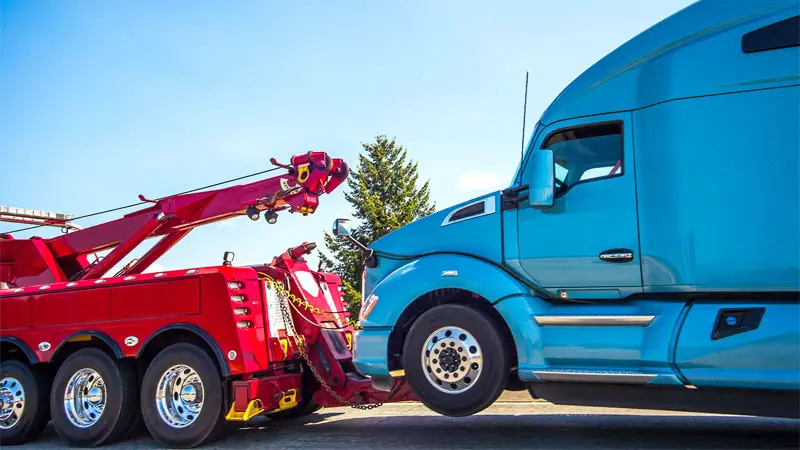When it comes to service vehicles, one usually thinks of ambulances or fire trucks, but there’s another essential vehicle out there we’ve all seen and only think about when we need it ourselves: the tow truck.
These vehicles move cars and other vehicles from one place to another, usually for the purposes of repair or impounding. Let’s take a moment to appreciate these workhorses in their various forms.
See Also: 11 Types of Dump Trucks
Types of Tow Trucks
1. Boom Trucks
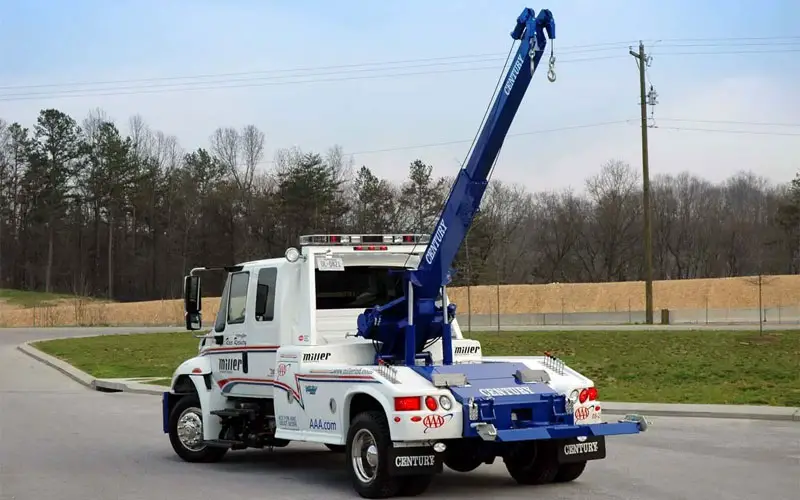
At some point, an inventive person looked at hook and chain tow trucks and asked, “Why don’t we use a crane instead?”
Thus was born the boom truck, a tow truck that has either a fixed or pivoting boom in the back. When arriving on the scene, the boom is extended, and use belts or slings in place of chains.
While functioning in a similar fashion to hook and chain tow trucks, the boom and sling design causes less damage to the vehicle being towed and is often more effective at lifting due to the winch being connected through the boom instead of on the truck bed. They’re also capable of carrying more weight than the traditional hook and chain.
Unfortunately, there’s still some risk of damage, and 4×4 vehicles cannot be towed safely, so you won’t see these tow trucks as often as designs that carry the entire vehicle.
2. Flatbed Tow Truck
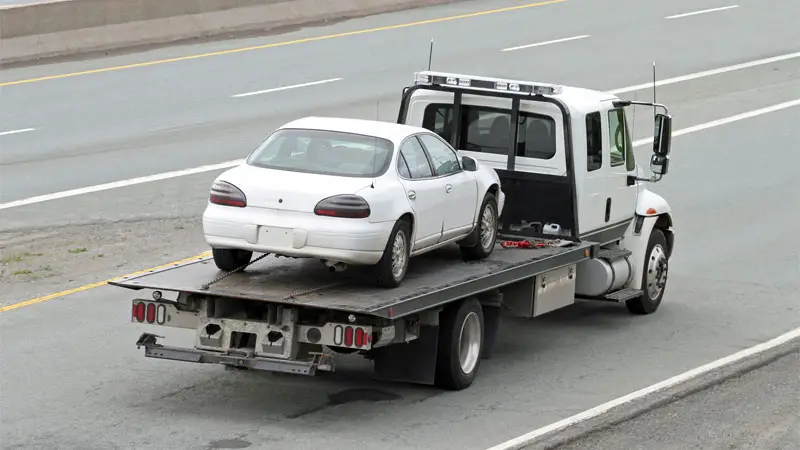
When it comes to transporting cars and other smaller vehicles, few tow trucks are more effective than the flatbed. The rear of this truck is a large platform, much like a regular flatbed truck. When the truck arrives, it pulls up, and a retractable ramp is pulled out from the rear.
If you drive an all-wheel drive or four-wheel drive vehicle, a flatbed tow truck is likely the only way to safely transport your vehicle.
This type of tow truck is an evolution of the classic hook and chain version and includes a winch for immobile vehicles. However, cars can also be driven or pushed onto the bed.
A huge advantage flatbed tow trucks have is that they can transport a totaled vehicle. Towed vehicles are secured to the bed once loaded, and even when the winch is used, the potential damage to a vehicle is minimal.
Tough and easy to operate, flatbed tow trucks have only one real disadvantage – weight. They can only carry up to a certain weight limit, so larger vehicles cannot be towed by this type of tow truck. With this in mind, the advantages of this design have made it the most popular type on the road today.
Read Also: 17 Types of Vans
3. Hook and Chain Tow Trucks
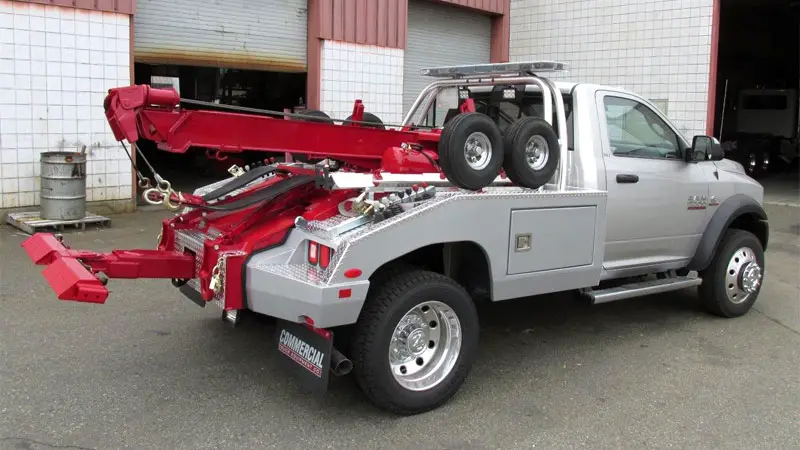
These were the original type of tow truck, and while aspects of the design have carried over to many newer types, they have largely fallen out of favor. The basic design has a hook and chain that is secured around the vehicle’s bumper or axle. A winch attached to the boom then raises the front of the vehicle so that only the rear wheels are in contact with the ground.
Unfortunately, the chains can put a huge strain on the vehicle being towed, often resulting in scrapes, chips, or even serious damage to the fender or axle.
In addition, 4×4 vehicles can easily suffer drivetrain damage when towed by a hook and chain tow truck. While some hook and chain models now employ strong nylon straps instead of chains to reduce damage, it’s becoming increasingly rare to see these trucks on the open road.
However, the story of hook and chain tow trucks is far from over, as they continue to prove useful in certain situations. For example, totaled vehicles with working rear wheels or those which are heading for the scrap yard are still usually towed by this kind of tow truck since damage is no longer a concern.
They are also helpful when pulling a vehicle from mud or another obstruction since the strain is only brief, and a few scratches are worth having the vehicle freed quickly.
4. Integrated Tow Truck
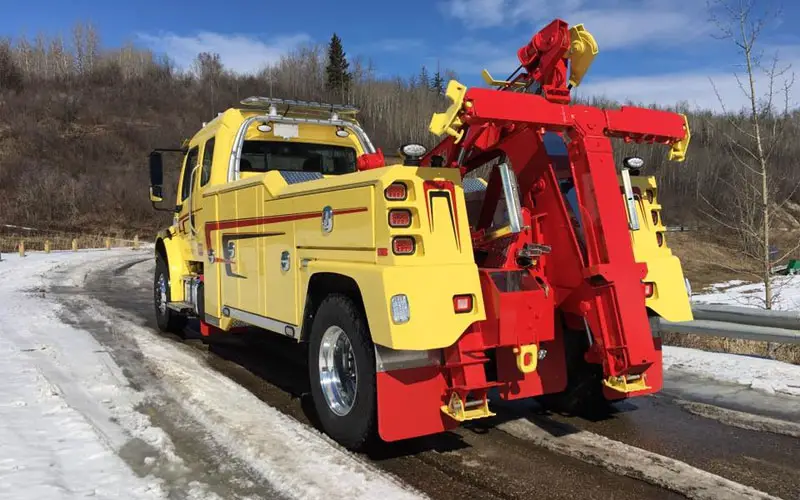
When you need a tow truck that can haul a bus or commercial truck, the integrated tow truck is perhaps the best choice out there. This tow truck uses two or more mechanisms, most commonly a boom and wheel lift.
As the boom arm is built into the very core of the vehicle, it can safely lift vehicles much heavier than the truck itself without the risk of tipping.
Unlike other tow truck designs, all of the controls are within the cab, allowing the operator to load the vehicle without ever getting out. This has made them quite popular for tasks such as repossession and impounding, as it provides more safety for the driver from angry vehicle owners.
But integrated tow trucks are also popular for less nefarious practices, and an extra axle makes them the go-to tow truck when a bus, tractor-trailer, RV, or other large vehicle breaks down.
Read Also: 11 Different Types of Limos
5. Rollback Tow Truck
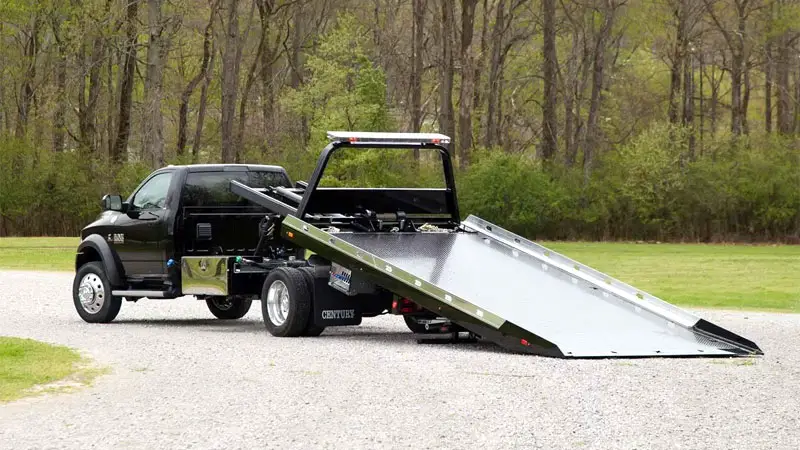
The rollback or slide tow truck is a variation of the flatbed tow truck, and the two are often lumped together. However, rollbacks have earned their nickname due to the innovative way they load vehicles.
Instead of a retractable ramp, the entire flatbed is mounted on powerful hydraulics, which raise the front of the bed and slide the rear to ground level, turning the entire bed into one big ramp.
While suffering from the same weight restrictions as a regular flatbed, rollback tow trucks make it easier to load sensitive equipment or heavily damaged vehicles. They’re also better suited for irregular terrain, as the bed’s angle can be adjusted as necessary.
6. Semi Tow Truck
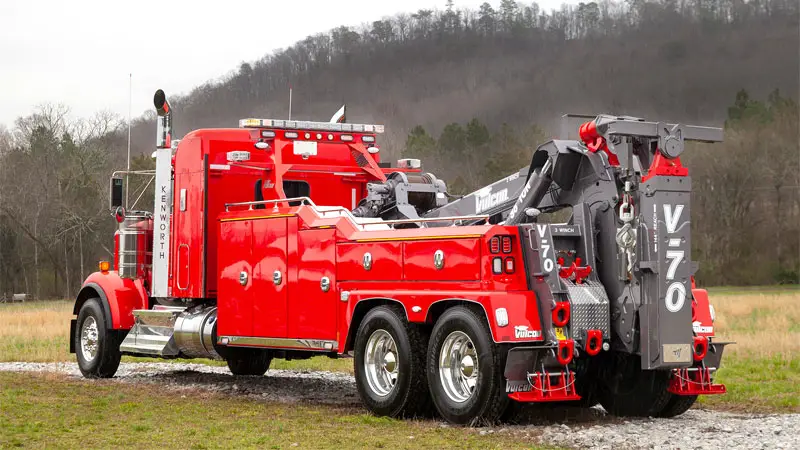
This is the king of tow trucks and thus rarely seen in normal towing operations. They more closely resemble a regular flatbed truck and are best used for hauling tractor-trailers, buses, garbage trucks, construction vehicles, and other heavy equipment.
In many cases, these are used for towing boats or large vehicles over long distances.
7. Wheel-Lift Tow Truck
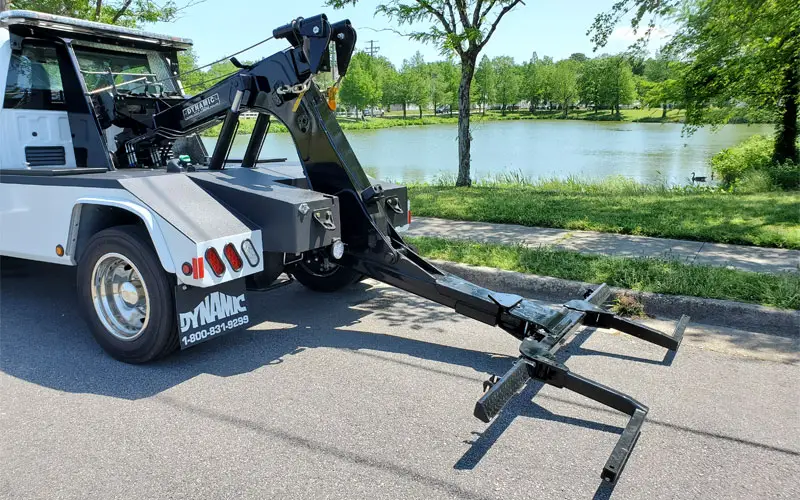
The most direct evolution of hook and chain tow trucks, the wheel-lift tow truck, uses a much safer method of lifting the vehicle. A metal yoke is attached to a hydraulic or pneumatic lift and is designed to hook directly onto the drive wheels of a vehicle. This eliminates the risks of damage or strain that hook and chain models create.
While they share the same inability to safely tow a 4×4 vehicle, these tow trucks are fast, efficient, and require little workspace compared to flatbed designs. As such, you’ll often see them working in municipalities to impound vehicles or for towing disabled vehicles in urban settings.
Incidentally, you can purchase special trailers for your pickup which perform the same function as a wheel-lift tow truck. These frames have a single axle, and you can move the drive wheels of your car onto them and secure the car, allowing your pickup or other sturdy vehicle to tow the car.
These trailers are often available to rent from moving companies such as U-Haul and can be used when traveling a long distance or as a cheaper alternative to hiring a tow truck for a smaller disabled car.

